

Jon Clements, Author (unless otherwise noted) and Editor
Current degree day accumulations
New England Tree Fruit Management Guide on-line
| UMass Cold Spring Orchard, Belchertown, MA |
4-April |
| Base 43 (NEWA) | 88 |
| Base 50 (NEWA) | 23 |
Note that apple green tip should occur app. 101 DD (Base 43), although obviously there is a range. We are still at silver tip (5-April) in Belchertown. The forecast is to be at app. 100 plus degree days Base 43 on 11-Apri. Hence, my prediction is to be at green tip next Tuesday (or sooner, a little showing here if you look hard). Good time then to be getting a copper spray on, perhaps include a fungicide if the apple scab forecast looks severe.
Current bud stages. April 5, 2017, UMass Cold Spring Orchard, Belchertown, MA
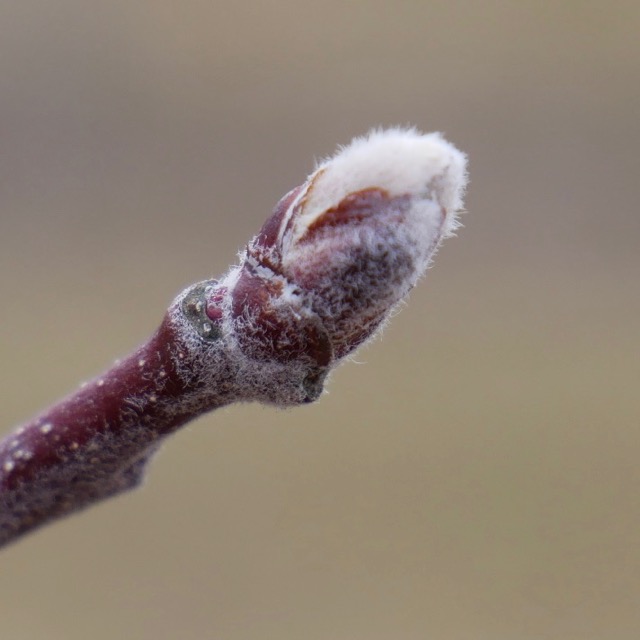 |
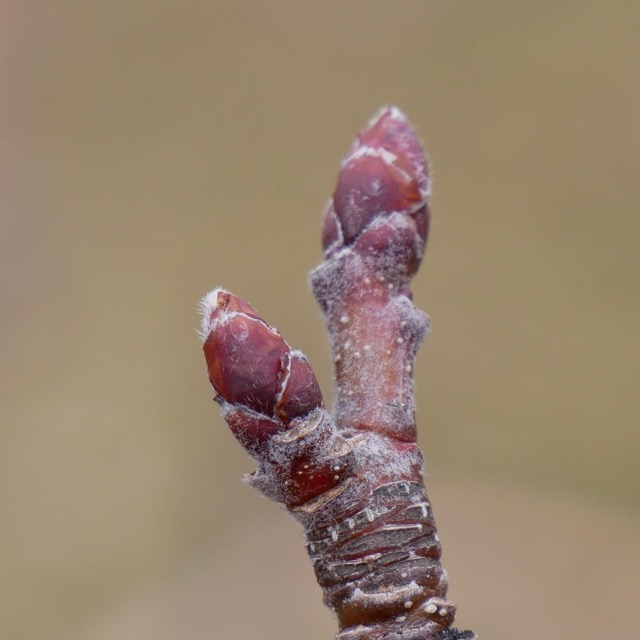 |
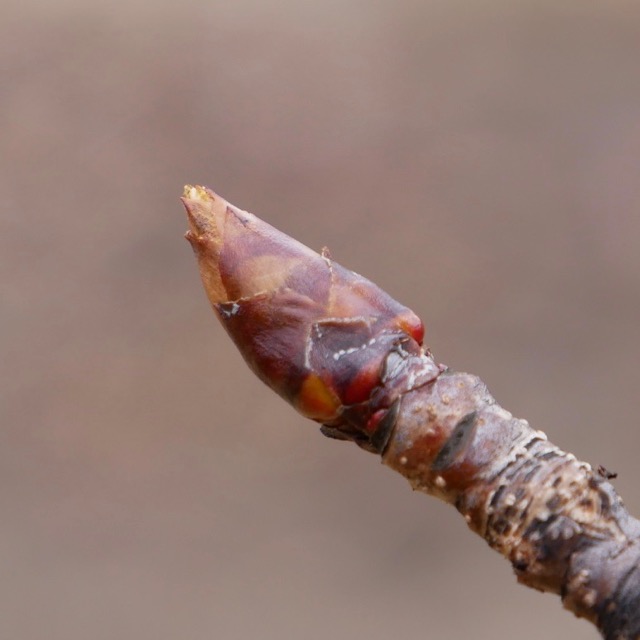 |
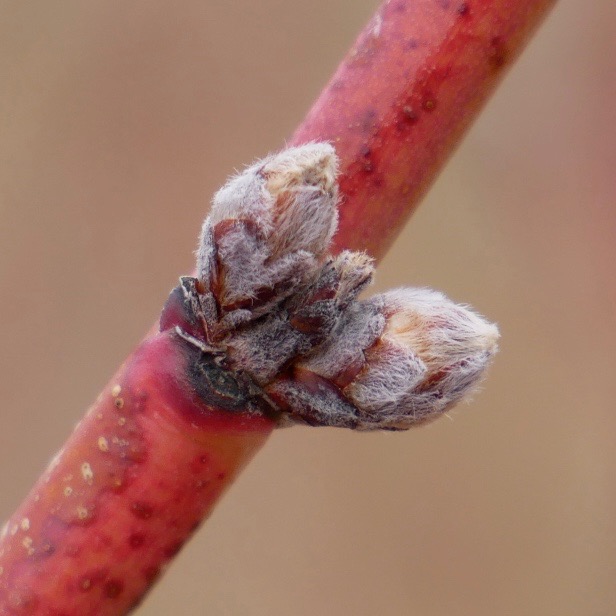 |
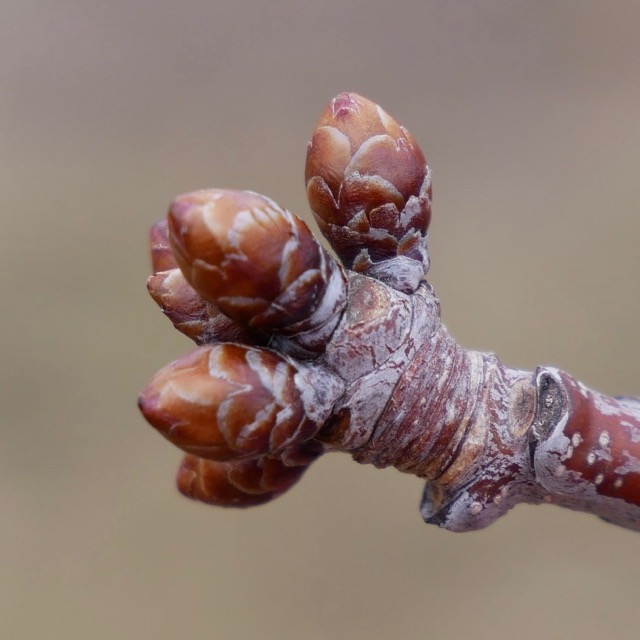 |
McIntosh apple silver tip + |
Honeycrisp apple dormant + |
Gold bosc pear early bud swell |
Redhaven peach swollen bud |
Regina sweet cherry early swollen bud |
| Coming events | Degree days (Base 43 BE) |
| Green fruitworm 1st catch | 49-148 |
| Pear psylla 1st oviposition | 40-126 |
| Redbanded leafroller 1st catch | 113-177 |
| Spotted tentiform leafminer 1st catch | 115-215 |
| McIntosh silver tip | 62-108 |
| McIntosh green tip | 98-144 |
12-April, 2017 (Wednesday) Fruit Twilight Meeting at 5:30 PM. Sunny Crest Orchards, 24 Hawkins Lane, Sterling MA. Bill Broderick will be our host. 1 pesticide credit will be offered. Light dinner (pizza/sandwiches) will be served. $20 admission. Contact: Jon Clements, 413-478-7219. Pre-registration is not necessary.
20-April, 2017 (Thurssday) Fruit Twilight Meeting at 5:30 PM. Phantom Farms, 2920 Diamond Hill Road, Cumberland, RI. In cooperation with Rhode Island Fruit Growers' Association. Terry Bradshaw, from the University of Vermont will share his expertise on orchard weed control, focusing on non-herbicide control. Two hours of pesticide credit should be available (pending) and a light dinner will be served. The meeting is free for RIFGA members and $20 for non-members. Contact: Heather Faubert, 401-874-2967 or Jon Clements, 413-478-7219. Pre-registration is not necessary.
25-April, 2017 (Tuesday) Fruit Twilight Meeting at 5:30 PM. Outlook Farm 136 Main Road, Westhampton, MA. Brad Morse will be our host. 1 pesticide credit will be offered. Light dinner will be served. $20 admission. Contact: Jon Clements, 413-478-7219. Pre-registration is not necessary.
25-April, 2017 (Tuesday) Airblast Sprayer Calibration Demonstration at 3 PM. Outlook Farm 136 Main Road, Westhampton, MA. (Preceding the Fruit Twilight Meeting at 5:30 PM.) Co-sponsored by UMass Extension Integrated Crop Management Program (eIP). 1 pesticide credit will be offered. Contact: Jon Clements, 413-478-7219. Pre-registration is not necessary.
For more information and updates, see Upcoming Events
Jon Clements
• This MAY be your last Healthy Fruit (HF), unless go to the UMass Extension Bookstore (http://umassextensionbookstore.com) and purchase a new 2017 subscription to HF ($50, e-mail delivery only) in the next week or two. Alternately, you can send me (Jon Clements, 393 Sabin St., Belchertown, MA 01007) a check for $50 (tips accepted) made out to 'University of Massachusetts.' Make sure you note it is for Healthy Fruit subscription, and includes your e-mail address. You can also use this mail-in form to order Healthy Fruit and other UMass fruit publications. You can ignore this of course if you have already sent in your payment. Thanks.
• Sometimes I run into some confusion regarding our UMass fruit program publications and membership in Massachusetts Fruit Growers' Association (MFGA). MFGA membership is $200 ($25 for non-grower members) and includes a complimentary subscription to American Fruit Grower. It does not include any UMass fruit program publications. You can join or renew your MFGA membership using a credit card here. (You can also make a voluntary donation to the UMass Cold Spring Orchard Research & Education Center, UMass Apple IPM Program, and/or MFGA's Horticultural Research Fund.) You can also join or renew MFGA using a mail-in form here. Note that using the mail-in form you can also order UMass fruit publications, but I don't recommend ordering UMass fruit publications with your MFGA membership using that form. If you want to order UMass fruit publications, I recommend you use this mail-in form. (Or you can order and pay using a credit card at the UMass Extension Bookstore.) I hope that clears things up a bit. I encourage you to both join MFGA and order the UMass fruit publications that are of interest to you. More information on our UMass fruit publications is available here. If you have any questions, please get in touch with me.
• OK, we are off to a slow start. YEEHAWWW! I think. Green tip should be next week, however, spraying anything is going to be a challenge given the extremely wet soil conditions. (BTW, is the drought over yet?) I would not rush things and wait until it dries out if you can. A copper spray on apples (before half-inch green), and on peaches (before bud break) and oil on pears (psylla) are the only things indicated at this time and over the course of the next week or so. I suspect many of you still have brush to move or chop? I know I still have pruning to do... :-(
• Bill Broderick at Sunny Crest Orchards in Sterling has agreed to host our first twilight meeting of the year next week on Wednesday (12-April). Bill has planted a lot of apple trees over the past few years, so that will be one focus of our attention. Should be a good meeting...
• The New England Extension tree fruit specialists -- which include myself and Dan Cooley at UMass. Mary Concklin at UConn, Heather Faurbert at URI, Terry Bradshaw at UVM, George Hamilton and Alan Eaton at UNH, and Glen Koehler and Renae Moran at UMaine -- have started to contribute to an on-line edition of the New England Tree Fruit Management Guide. Call it a beta version if you will, but we think it has some value in 2017 as we continue to work on it. (Consider it dynamic? Work-in-progress? Under construction?) But many of the spray tables (for lack of a better description) are filled out. Note that is it easy to print any of the sections, if you want to have old-school reference, for examplle, to hang on your spray shed wall. Also, it is quite mobile-friendly so make a home screen shortcut to here: http://netreefruit.org.
Elizabeth Garofalo
Spring is finally here, for real this time! While we were all out yesterday enjoying the beautiful weather (last Monday), our first of the season insect pests were also soaking up the sunshine. At this time of year, there are three, in particular, that you should be thinking about hammering back with a solid dormant oil application.
Winter moth update (April 4, Heather Faubert, URI)
I expect winter moth eggs will begin hatching soon - I think either over the weekend or early next week. Many people are helping by monitoring winter moth eggs. I will let you know when eggs start to hatch so an insecticide such as Imidan can be applied to protect apple, pear, and blueberry buds.
Past messages can be seen at: http://web.uri.edu/ipm/2017-2/ |
Dan Cooley
Is There a Downside to Urea?
There is concern in some places that urea applications for scab management are bad for apple tree nutrition. I’m not sure where the idea comes from, but I disagree. But since I’m not a specialist in apple nutrition, I decided to run it by someone who is, Wes Autio. Here’s our thinking on the matter
First, realize that this is not a fertilizer application. Little if any nutrition makes it to the apple trees. Urea should not be spreading as granules to break down apple leaves. Urea for scab management should be applied as a solution, preferably in fall before leaf drop, or soon after leaves fall. The spray won’t “control” scab, but is part of a sanitation program.
The highest priority in scab sanitation is chopping leaves, either in spring or fall. Spraying urea improves the impact of leaf chopping, so doing both is a good idea. Sanitation lowers the risk of scab outbreaks and the development of fungicide resistance, and is worth doing every year.
The argument against using urea contends that it adds too much nitrogen to an orchard, decreasing fruit quality and increasing fire blight risk. However, the application of urea to leaves in a solution makes it largely unavailable to apple trees. The 22 lb/A of nitrogen being put on with a urea application targeting scab would have minimal impact on a fertility program. Most if not all the 22 lb. of N in a 44 lb/A urea application stays on the old leaves or grass on the orchard floor, volatilizes as a gas, or is tied up in microbes that break down the old leaves. As for aggravating fire blight or hurting fruit color, there simply is no evidence that urea applications in the amounts and a form recommended FOR SCAB SANITATION do those things.
Some suggest that urea acidifies soils like other ammonium sulfate and ammonium nitrate. That’s very unlikely. All N fertilizers do not have the same impact on soil pH. Urea and ammonium nitrate are slightly acidifying fertilizers, while ammonium sulfate is severely acidifying. Again, we’re talking 44 lb./A urea, not incorporated in the soil, but doing its thing at the soil surface, mostly in old apple leaves.
Growers may ask “Why not just buy extra fungicide and use it?” Fungicides are certainly the primary tool in apple scab management, but sanitation and fungicide sprays aren’t mutually exclusive. They work together to produce a high-quality crop. Sanitation adds an important margin of safety, reducing the overall risk of scab. In spite of our best efforts, sometimes mistakes happen, or the weather doesn’t cooperate. Sanitation cuts the chance that a couple of plugged nozzles, a windy day, or a two-week rain will lead to a bad scab outbreak. It also helps keep a full array of fungicide options available by reducing the chance that the fungus will develop resistance to them.
Scab sanitation should always involve chopping leaves, but urea sprays improve control. It’s best done in the fall when the ground is generally drier, and leaves have more time to decay, but can be done in spring. The bottom line is that including urea as part of a sanitation program reduces scab risk without negative impacts on the crop.
Copper
If you haven’t already attempted to turn your apple trees blue, now is the time to spray some dormant copper. This is first and foremost a fire blight treatment. The basic goal is to get enough metallic copper on trees to last until about Pink. This should suppress fire blight bacteria.
Regardless of fire blight history, apply copper at silver to green tip every year and cover the whole orchard. Fire blight is unpredictable so it’s important to keep your guard up. You don’t want to give the bacteria a base of operations on trees that are at relatively low risk. So the old Mac’s on M7’s may not be in much danger themselves, but if they aren’t covered with copper, the Erwinia can move from them to the new Honeycrisp on M9 block where they can do significant damage.
Don’t apply copper later than Half Inch Green, as it may damage leaves or end up russeting fruit. If weather is predicted to be near freezing, copper and oil can damage leaves, but will be fine on trees that are dormant to Silver Tip.
Apply at least 2 lb. of metallic copper per acre. There are too many copper products to list so I won’t try, but most formulations have 20% to 50% metallic copper. However, newer products, like Cueva, have much less, in this case 1.8%. That decreases the chance of tissue damage for products applied on new leaves and fruit, but isn’t the best choice for a dormant spray. To get 2 lb./A metallic you’d need to use over 100 lb./A of Cueva
Good coverage is important. You want to get the copper into the cracks and crevices on the trees, so apply as dilute a spray as is practical. Mix with oil, at least 1 qt./100 gal., though you can go higher if you’re also trying to control scale and mites.
In an orchard with little scab pressure, the copper will be adequate to control scab for the first 5 to 7 days after bud break, though it’s safer to add a low rate of an EBDC fungicide (usually 3 lb/A mancozeb) as well.
Jon Clements
This time of the year, everyone is concerned about making it through April-May w/o damaging temperatures to fruit buds. (And then we start worrying about hail.) With that in mind, here are a few websites of interest:
Critical Spring Temperatures for Tree Fruit Bud Development (from Michigan State University Extension, nice to print and put on wall so you can stare at and worry)
Climate Smart Farming Apple Stage/Freeze Damage Probability (note: not an endorsement here, this site has some issues, mostly by declaring growth/bud stage earlier than it actually is, but it is interesting)
Northeast Regional Climate Center Apple Frost Risk Maps (note: ditto from above)
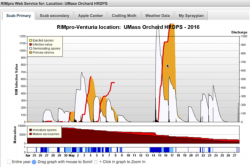
Apple Orchard Management Decisions in 2017: Take Advantage of Technology
by Jon Clements and Daniel Cooley, UMass Amherst
(re-printed from http://ag.umass.edu/fruit/news/apple-orchard-management-decisions-in-2017-take-advantage-of-technology)
Online Decision Support Systems (DSS’s) provide guidance in managing disease and insect pests using weather based forecasting models. These DSS’s predict pest development and risk of infection/damage. Weather data can be acquired from either on-site weather stations or by virtual gridded data. For 2017, Massachusetts apple growers have a choice of four DSS’s, which are briefly outlined below.
SkyBit E-Weather (skybit.com ) is a commercial service that provides weather data and model output via daily e-mails...
Ag-Radar (agradar.info ) is run by Glen Koehler at the University of Maine and uses Skybit subscription data to run many, many disease/insect and horticulture models and tools...
Network for Environment and Weather Applications (NEWA) (newa.cornell.edu ) provides weather data and model outputs by a network of weather stations of which there are currently 46 in Massachusetts…
RIMpro (www.rimpro.eu ) is a European-based cloud service that produces mostly graphical model outputs in greater detail than the other DSS’s mentioned above…
Note that all these DSS’s require user input in terms of setting biofixes (when things happen in your orchard), including bud stage (phenology), and in some cases pheromone trap captures. Also, there is typically some initial setup involved, however, anyone can visit NEWA or Ag-Radar to view model outputs and pest management tools. You are encouraged, however, to get your own site set up on one of these DSS’s as it will be more accurate than a site that is “close to you." You will find these important tools for Integrated Crop Management should help you produce a better apple crop in 2017.
If you have any questions, please contact Jon Clements, jon.clements@umass.edu 413-478-7219.
Follow me (jmcextman) on FB: https://www.facebook.com/jmcextman
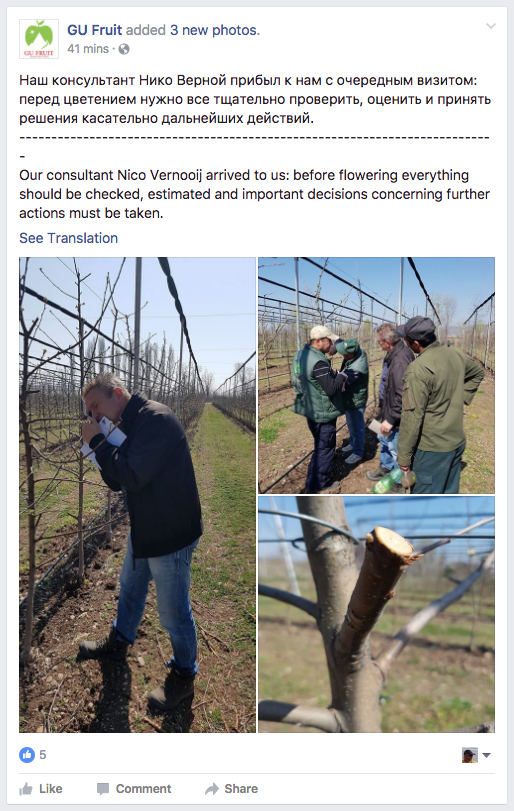
UMass Fruit Advisor: http://umassfruit.com
Scaffolds Fruit Journal: http://www.nysaes.cornell.edu/ent/scafolds/
Network for Environment and Weather Applications (NEWA): http://newa.cornell.edu
Follow me on Twitter (http://twitter.com/jmcextman) and Facebook (http://www.facebook.com/jmcextman)
The next Healthy Fruit will be published on Tuesday, April 11 or thereabouts, 2016. As always feel free to get in touch with any member of the UMass Fruit Team (http://extension.umass.edu/fruitadvisor/team-members) if you have questions or comments.